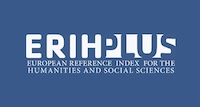Blockchain en Educación: introducción y crítica al estado de la cuestión
DOI:
https://doi.org/10.21556/edutec.2017.61.915Palabras clave:
Cadenas de bloque, Contratos inteligentes, aprendizaje adaptativo, Curriculum, certificación, acreditaciónResumen
La tecnología de las cadenas de bloques (blockchain) abandonan el terreno de la moneda digital para invadir otros campos. También en Educación, aunque muy tímidamente, aparecen aplicaciones todavía con un carácter piloto. Pero las expectativas que están levantando llevan a plantearse qué es esa tecnología, para qué se usa, cómo podría aprovecharse en Educación y que oportunidades y qué amenazas puede suponer. El análisis del estado de la cuestión aprovecha para proporcionar numerosas referencias y enlaces que deben llevar a conocer y reflexionar sobre esta nueva tecnología
Descargas
Descargas
Publicado
Cómo citar
Número
Sección
Licencia
Con la entrega del trabajo, los autores ceden los derechos de publicación a la revista Edutec. Por su parte, Edutec autoriza su distribución siempre que no se altere su contenido y se indique su origen. Al final de cada artículo publicado en Edutec se indica cómo se debe citar.
La dirección y el consejo de redacción de Edutec Revista Electrónica de Tecnología Educativa, no aceptan ninguna responsabilidad sobre las afirmaciones e ideas expresadas por los autores en sus trabajos.








